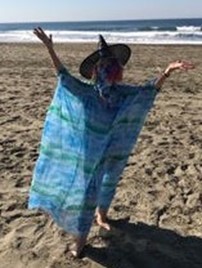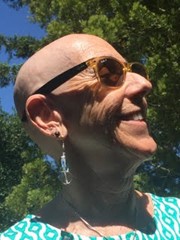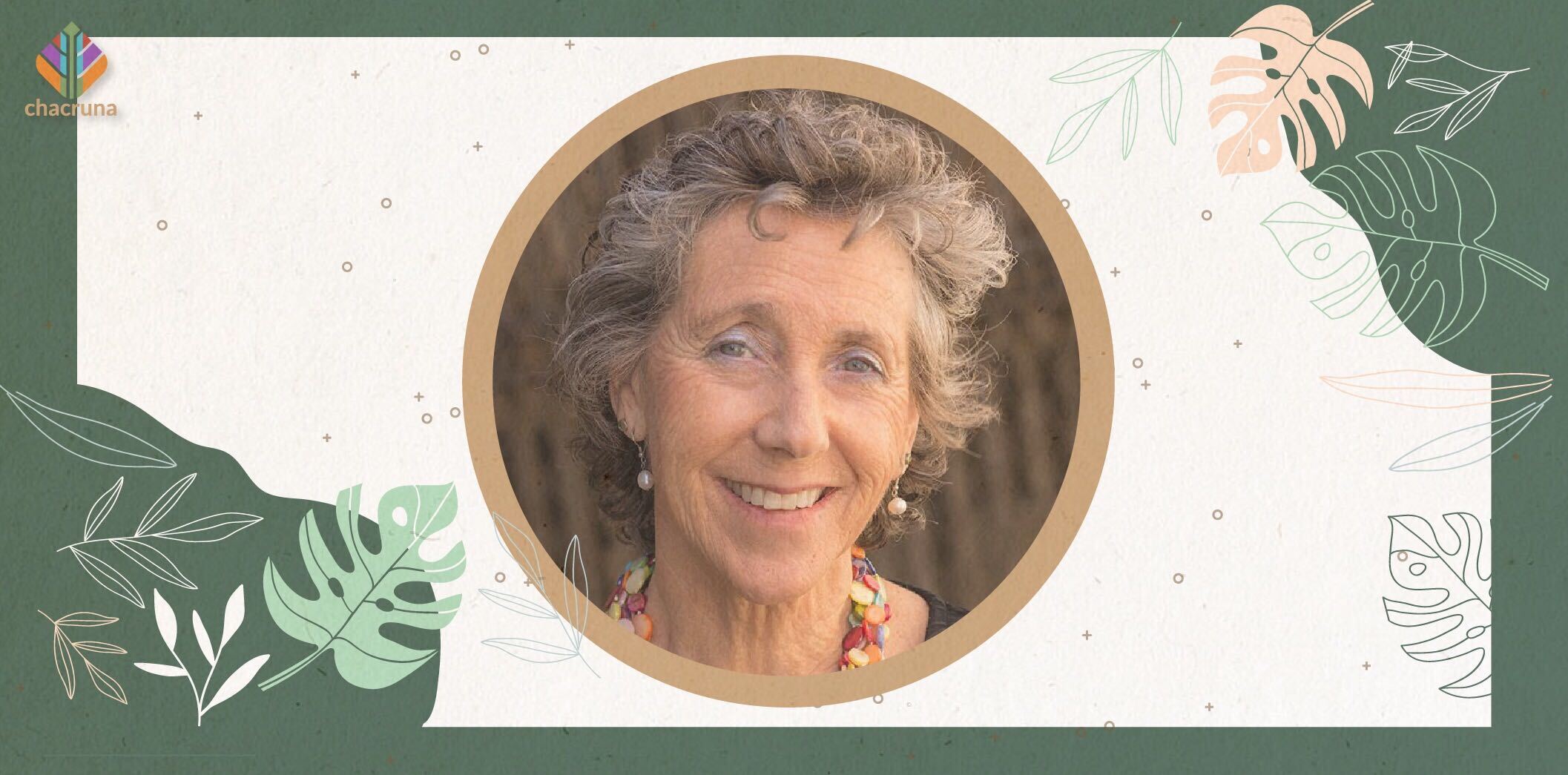- Global History of Psychedelics: A Chacruna Series - October 4, 2023
- Can Psychedelics Promote Social Justice and Change the World? - August 30, 2021
- Kathleen Harrison: Wisdom, Endurance, and Hope – Reflections from a Psychedelic Woman - August 18, 2021

There is a reason we call it Mother Earth. Nature teaches us. It nurtures. It nourishes. It protects. All that is born, comes from this planet and our own physical embodiment of earth. And, in return, we must honor and respect the earth, as we do our mothers. Redwing Keyssar’s life is a testament to these principles, and her journey is emblematic of this relationship.

Redwing’s connections with psychedelic plant medicines have spanned several decades, from youthful explorations, through academic pursuits, and into a life-long dedication to caring for the dying. Plant medicines have been crucial teachers in her life. Redwing has drawn experiences, teachings, and influences from different ways of doing ceremony and connecting with the earth, including from North American Indigenous, Buddhist, and Pagan/Celtic traditions. For Redwing, most of her spiritual teachers and healers have been women. Learning from women and plant medicines has kept her connected to Mother Earth.
Youthful Exploration
In her teenage years in the 1960s, growing up in New Jersey, Redwing learned about psychedelics simply by living in a culture that was experimenting with mind-altering substances in more public ways. Psychedelics were in the news. Timothy Leary, Ram Dass, the Grateful Dead, Janis Joplin—everyone was dropping acid and “tripping.” News reports in her local town newspaper stated that 99% of her high school had experimented with marijuana. (Everyone’s parents thought that their child of course, was in the 1% that did not!) It was the time of Woodstock, and the “Summer of Love.”
Seeking Knowledge and Connection
Although recreational drugs were ubiquitous in her social circles, she always had the sense that these “medicines” were to be used for learning more about the psyche and the human condition. Her experiences, she explained, were not about escaping, or taking a substance simply for recreational purposes. She always wanted to learn more about her connection to others, to the universe and to creativity. Mescaline, from the peyote cactus, for instance can be a temperamental teacher—allowing one to confront difficult as well as exhilarating openings of the mind. It was her earliest “teacher” in the psychedelic realm. Huxley’s interpretation of opening the “doors of perception” made sense to Redwing at an early age, enabling her to walk through those doors, create artwork related to her experiences, and ultimately to make drastic changes in her life’s path.
Academic Disillusionment
Thinking outside the box came naturally to this budding healer. Destined for medical school in the 1970s, Redwing enrolled at Brown University. Surrounded by male professors at the height of the women’s movement however, the university was a battleground for interpreting different kinds of evidence. Embodied evidence, or experiential knowledge fueled women’s health activism at the time, leading to landmark publications, like Our Bodies Ourselves, (written by the Boston Women’s Health Collective) which challenged the idea that male doctors (or politicians) could truly understand women’s experiences or make decisions about their reproductive bodies and rights.
This sentiment did not just apply to reproductive rights and women’s health issues. Redwing tried this logic in a philosophy class where she used her mescaline experiences as the subject of an essay, relating Martin Buber’s theories of “I and Thou” to her own personal spiritual understandings. Her professor was not convinced, and it impressed upon her how quickly her experiences could be invalidated in the academy.
Learning Beyond the Academy
Leaving her medical school dreams behind her, Redwing moved on from university and the confines of the East Coast but continued learning from a diverse set of teachers about the relationships between human beings and the earth.
Learning how to appreciate plant medicines appealed to Redwing’s curiosity about learning from the earth.
“Learning how to appreciate plant medicines appealed to Redwing’s curiosity about learning from the earth.”
It was while living in rural northern California, that she learned about the teachings of Native American peyote ceremony as well as the healing properties of other psychedelic plant medicines. These teachings have played an enormously important role in shaping her attitudes towards life and death, as well as in understanding her own ability to listen to her intuition, be present, and understand what it means to “hold sacred space.”
Redwing Keyssar: Teacher and Ceremonialist
She feels that her experience in leading ceremonies of various natures over the past 40 years has informed her desire and ability to be a teacher in her field of palliative care, as well as in creative realms like leading “Poetic Medicine” workshops. Beginning with the peyote ceremonies, Redwing learned to appreciate the lessons drawn from these plants, in terms of accessing one’s own abilities to heal and be healed, and to “channel” information from realms beyond our typical three-dimensional world. It was clear to her that intention and ritual were key parts of creating healing communities and understanding the connectedness of all Beings.
Ceremony
Consuming peyote is not just a transaction, but involves ceremony, deference, and respect. Before taking peyote—or any other psychedelic plant medicine—one must prepare. Preparation can involve fasting and meditation, planting seeds of intention, but necessarily requires one to emotionally, physically, and spiritually prepare for the lessons, which then must be integrated into daily life. The plant teachers may reveal important insights, but the consumer needs to be ready to accept and integrate the teachings. Otherwise, why ask/pray for this kind of healing?

Above all, the ceremonial aspect of psychedelic plant medicines has a lot to teach us about all rituals of life and death. Redwing explains that psychedelic plant medicines are a spiritual and emotional tool that can be useful for grounding one’s self and learning to trust our own bodies and minds. This lesson is essential for using experiential knowledge as healers and caregivers, especially with those at the end of life.
“Psychedelic plant medicines are a spiritual and emotional tool that can be useful for grounding one’s self and learning to trust our own bodies and minds.”
It is important to note here, that although the basic “forms” of plant medicine ceremonies have been taught to many white people and passed on to others, there is still much controversy about non-Indigenous people using teachings from traditional cultures. In Redwing’s spiritual community, this controversy is acknowledged and prayed about. The ceremonies have also evolved over the past 40 years to become a different type of ritual, based on the traditions and ancestors of all who participate.
She feels that this evolution both honors the Indigenous roots of so many healing traditions with medicine plants, while at the same time it allows for the transmission of healing traditions into cultures and communities that are in need of spiritual teachings and healing that resonates with our own experiences of living in the world in the twenty-first century. The Age of Aquarius—where we are still hoping that Love will steer the stars.
A Tragedy Spurs Healing
In 1988, Redwing faced a tragedy that clarified her journey into the healing arts. A dear friend suffered a brutal set of injuries in a motorcycle accident that left her incapacitated and tethered to life support in an intensive care unit. Beneath the tangle of cords, the din of beeping machines, and under the fluorescent lights of the hospital room, Redwing’s friend lay broken and dying.
Over the course of her daily visits, Redwing’s thoughts drifted to memories of her own grandmother—a strong Jewish woman who was a nurse and midwife at the turn of the twentieth century in Russia. Redwing felt that she “heard” her grandmother’s voice letting her know that her destiny, her reason for being on this Earth at this time, was to be a midwife to the dying. In those moments Redwing committed herself to returning to the teachings of western medicine to become a nurse, in order to attend people who were suffering and dying.
Midwife to the Dying
For the past 30 years, Redwing has worked in palliative and end of life care as a nurse, midwife, teacher, and author. Her career predates the introduction of palliative care units in hospitals, when dying care often occurred without consideration of all levels of suffering—on oncology units as patients faced terminal diagnoses without much discussion or in ICUs where invasive “life support” was not questioned. It was not until the early 1980s that hospice was a Medicare offering in the United States, and it took many more years for people to incorporate the broader philosophy of palliative care into hospice and hospital settings. She notes that we are still working on that integration in 2020.
“We still live in a culture that is death phobic. We prefer to hide it away. We still shy away from talking about dying with the living.”
Regardless of where people die, Redwing states, we still live in a culture that is death phobic. We prefer to hide it away. We still shy away from talking about dying with the living. But, her experiences at and insights from the bedsides of hundreds are poignant reminders that death is part of living and can be a beautiful transition. She chronicles this in her book, Last Acts of Kindness, Lessons for the Living from the Bedsides of the Dying (2011).
Redwing’s Cancer Journey

Redwing has continued to draw inspiration and further insights from her own embodied experiences. In 2013, she confronted her own cancer diagnosis, an experience that added to her reservoir of knowledge when it came to empathizing and guiding people through the process of dealing with serious illness, from day of diagnosis onward.
During her own chemotherapy infusions, Redwing researched what “plants medicines” were at the root of her treatments. Taxol, a common chemotherapy, comes from the beautiful green and purple yew tree. Carboplatin, one of the platinum-based chemotherapeutic agents, comes originally from the platinum molecule—a beautiful black, shiny rock. Psychedelic in nature? No. But powerful plant medicine origins? Yes!
She set up photos of these plants and rocks and arranged a healing altar, each time she entered the infusion center for her treatments. This ritual is just one way that the understanding of plant medicine and prayer has become a useful and practical tool in her life.
Extremely grateful for the healing powers of chemotherapy and western medicines, Redwing also continues to turn to the teachings of plant medicines to assist with her own healing.



Top Left: Redwing’s Healing Alter; Bottom Left: Platinum [Carboplatin]; Right: Yew Tree [Taxol]
Psychedelic plant medicines are so obviously part of “palliative care,” Redwing says. Those who are suffering with serious illness are often dealing with issues of emotional, psychological, and spiritual and existential suffering, that western medicine does not have tools to treat. The promising future of legalization of psychedelics for those with serious illness, is part of the evolution of consciousness of this Aquarian Age.
Redwing cautions us to use these medicines wisely, intentionally, ideally with experienced guides or indivdiuals who know how to create meaningful ceremony. Expanding our realms of awareness and opening our own “doors of perception” may be one of the ways that we can truly heal ourselves, our loved ones, and our dear Mother Earth.
Art by Marialba Quesada.
- 6840342868592,70.3159657131408 ↩
Take a minute to browse our stock:
Did you enjoy reading this article?
Please support Chacruna's work by donating to us. We are an independent organization and we offer free education and advocacy for psychedelic plant medicines. We are a team of dedicated volunteers!
Can you help Chacruna advance cultural understanding around these substances?
















